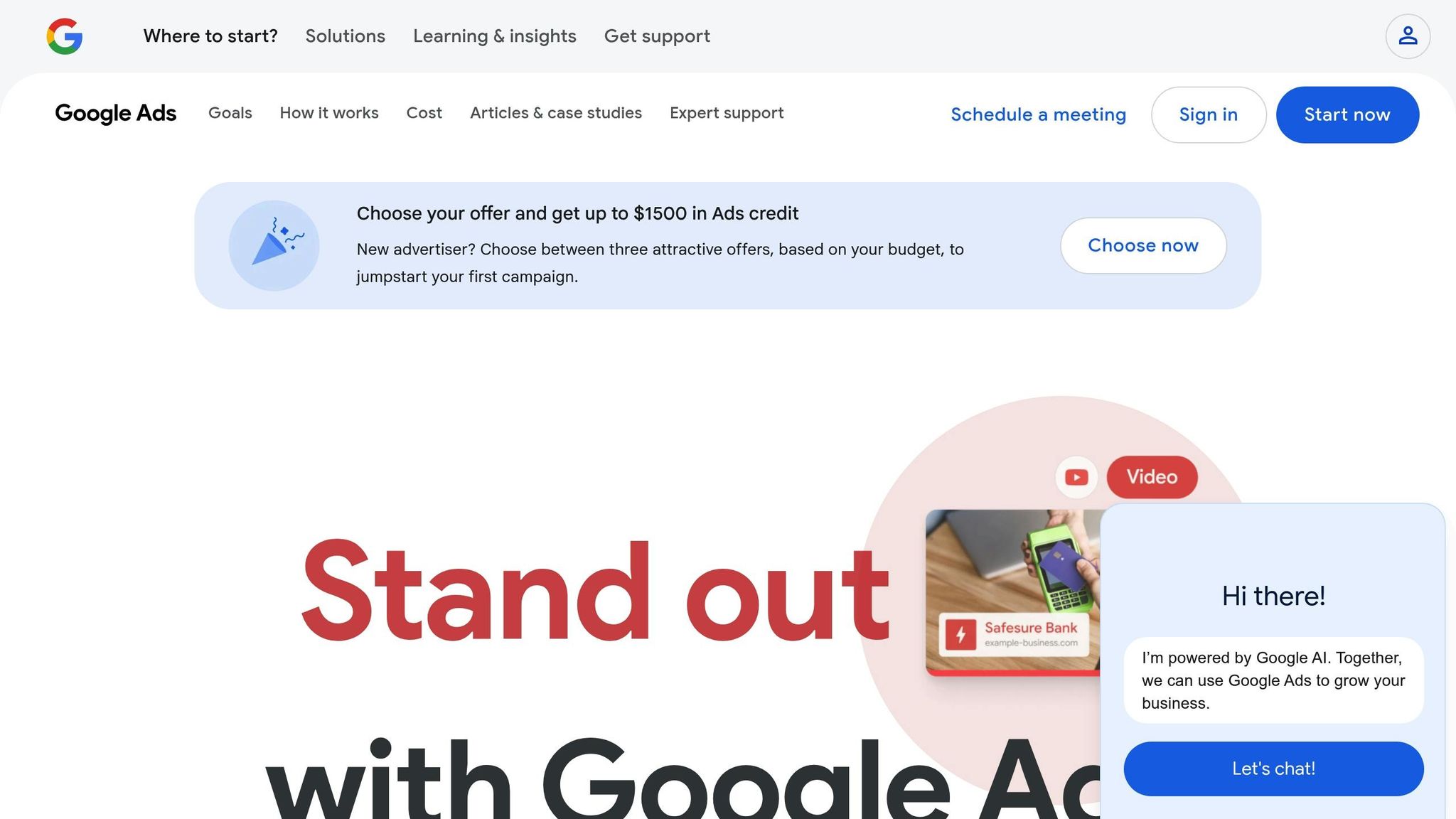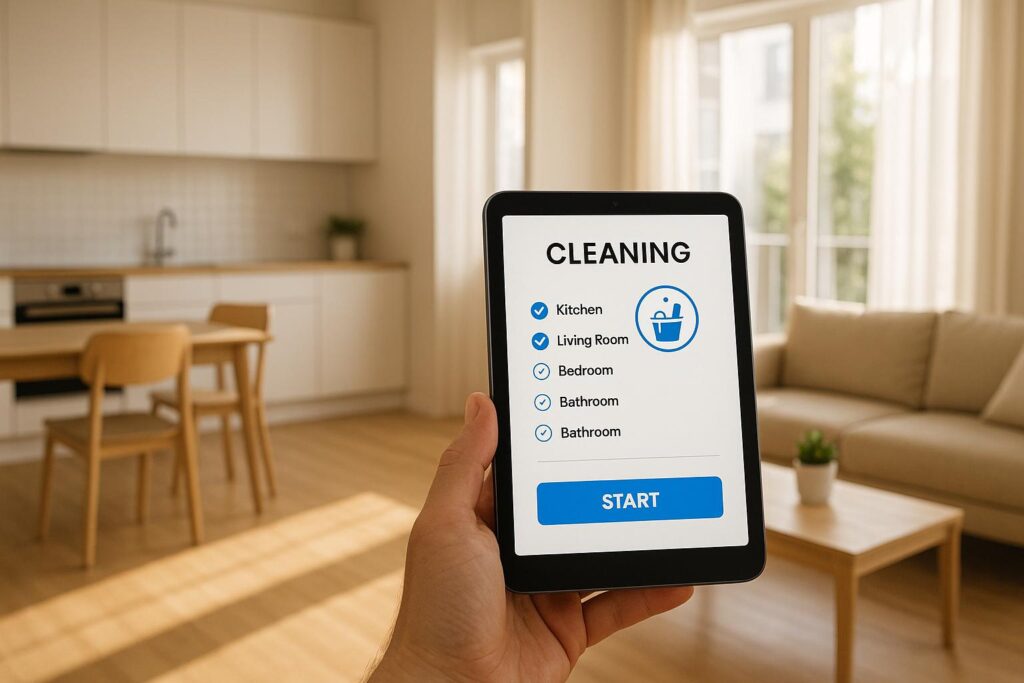- Target Austin neighborhoods: Focus on areas like Downtown (78701), South Congress (78704), and Westlake Hills (78746) with precise location targeting. Adjust bids for high-demand areas.
- Use demographic filters: Narrow your audience by income, age, and parental status to match your ideal buyers.
- Add Austin-specific keywords: Include terms like "homes for sale in South Austin" or "Westlake Hills condos" to align with local search intent.
- Incorporate market data: Highlight trends like median prices, days on market, or school ratings in your ad copy.
- Leverage ad extensions: Use call, location, and sitelink extensions to provide more details and increase engagement.
- Adjust budgets seasonally: Spend more during spring and fall, and optimize ad timing for summer mornings and evenings.
- Build localized landing pages: Create pages for each neighborhood with visuals, market insights, and conversion tools.
These steps help you connect with motivated buyers, optimize your ad spend, and boost ROI in Austin’s competitive real estate market.
Google Ads for Real Estate Agents 2024 – [Step-by-Step …
1. Set Up Location Targeting for Austin Neighborhoods
Focus your ad spend on Austin’s key neighborhoods by setting up radius targets around popular areas like Downtown (78701), South Congress (78704), and Westlake Hills (78746). This method ensures your ads reach people actively searching in these specific locations.
- Enable "People in or regularly in your targeted locations" to include both residents and frequent visitors.
- Create neighborhood-specific ad groups for areas such as:
- Downtown (78701)
- South Austin (78704)
- Westlake Hills (78746)
- Increase bids by 10–20% in high-demand areas. For example, if your base CPC is $2.00, raise it to $2.40 in these neighborhoods.
- Use the Locations report to identify top-performing areas and adjust your budget accordingly.
- Exclude neighborhoods where average home prices fall below your target range.
- Expand your radius by 1–2 miles during peak moving season (May–August) to capture a broader audience.
For even better targeting, use demographic filters to align with your ideal buyer profile.
2. Use Demographic Filters to Fine-Tune Your Audience
Once you’ve selected your locations, take it a step further by applying demographic filters like age, income, and parental status. This approach helps ensure your ad spend reaches the right people more effectively.
- Income ranges: Align these with your home’s price point to attract the right buyers.
- Age groups: Focus on specific brackets – 25–34 for first-time buyers, 35–49 for families, and 50+ for those looking to downsize.
- Parental status: Target families by using this filter to zero in on households with kids.
Keep an eye on how these filters perform and tweak them as needed to improve your conversion rates.
Consider using demographic filters such as age, income, and household composition to target potential homebuyers in Austin.
3. Add Austin-Specific Keywords to Ads
After setting up precise location and demographic targeting, the next step is to focus on keywords tailored to Austin buyers. Incorporate the names of Austin neighborhoods with property-related terms to align with local search intent. Leverage Austin MLS data and market reports to identify trending keywords and buyer interests.
Pair neighborhood names with terms like "homes for sale", "condos", or "investment properties." Monitor your campaigns closely – pause or replace keywords that aren’t performing well. Continuously update your keyword list using the latest MLS insights and market trends.
Finally, integrate these keywords into your ad copy, blending them with local market data to make your ads more relevant and impactful.
Use Austin MLS data and local market reports to identify trending search terms and buyer interests.
sbb-itb-4c99469
4. Include Austin Market Data in Ad Copy
Take your ads to the next level by incorporating up-to-date Austin market data. Using current trends and neighborhood-specific stats can make your ads more relevant and appealing.
- Highlight market trends: Include details like average days on market or the median price per square foot.
- Showcase neighborhood perks: Mention local parks, popular dining spots, or walkability to make the area more attractive.
- Add school information: Share school ratings or proximity to top schools and major employers.
- Create urgency: Use headlines like "Limited inventory in South Austin – Act now!" to drive action.
Make sure to track data regularly – monthly for metrics like median prices and price per square foot, and weekly for factors like days on market or interest rates.
Focus on specific neighborhoods rather than citywide stats. Localized insights resonate more with buyers and help attract those genuinely interested in particular areas. Combining this precise data with targeted ads ensures your message connects with the right audience and brings in qualified leads.
5. Use Ad Extensions to Share More Details
After tailoring your ad copy and keywords for the Austin market, take advantage of ad extensions to provide extra information in search results. These can help make your Austin listings stand out by including details like your address, phone number, and links to specific pages. The result? More clicks and better leads from potential buyers.
- Location extensions: Display your office address, phone number, and a map marker to make it easy for buyers to find you.
- Call extensions: Add a click-to-call button so buyers can quickly reach out with questions or schedule showings.
- Sitelink extensions: Direct users to specific pages like "Current listings by neighborhood" or "Single-family homes and condos."
Ad extensions not only highlight key details but also keep buyers interested as they browse your ads.
6. Adjust Budget Based on Austin Market Trends
Managing your Google Ads budget in Austin means keeping an eye on local trends and adjusting your spending to match demand. Timing is everything, and aligning your strategy with seasonal patterns can help you make the most of your budget.
- Spring: Ramp up spending and promote fresh listings.
- Summer: Scale back slightly; focus on running ads during mornings and evenings.
- Fall: Increase budget again and fine-tune targeting (e.g., families moving to the area).
- Winter: Keep a steady base spend, aiming at motivated buyers.
Focus extra ad dollars on neighborhoods seeing new construction or redevelopment. If a local area gets a boost from good news – like a new employer or infrastructure improvements – adjust your budget to catch the wave of increased interest.
For summer, schedule ads for early mornings and evenings when buyers are active. On weekends, target afternoons when people are likely attending indoor showings.
Finally, create landing pages aligned with these budget strategies to engage and convert your Austin audience effectively.
7. Build Austin-Focused Landing Pages
Connect each landing page to its corresponding ad group by using matching URLs, page titles, and keywords. This approach can help improve your Quality Score and drive more conversions.
Key Elements for Effective Landing Pages
- Above-the-fold visuals: Use high-quality photos, a brief neighborhood overview, and a clear call-to-action (CTA) for home valuations or contacting an agent.
- Local market insights: Include key details like median home prices, average days on the market, and current trends to provide value to visitors.
- Community descriptions: Highlight what makes each area stand out – its amenities, atmosphere, and lifestyle. Help potential buyers picture themselves living there.
- Lifestyle highlights: Showcase nearby dining options, parks, and attractions that add to the appeal of the area.
- Conversion tools: Add features like a home valuation form, property search filters, or an option to book a consultation with an agent.
Coordinate these pages with your ad spend and seasonal campaigns to attract more qualified leads.
Conclusion
Use these seven Google Ads strategies – accurate location targeting, demographic filters, Austin-specific keywords, local market data in your ad copy, ad extensions, budget tweaks, and custom landing pages – to attract qualified leads and boost ROI in Austin’s competitive market. Keep an eye on local trends and seasonal changes every week to fine-tune your bids and keywords. Pair your digital marketing skills with a strong understanding of Austin’s neighborhoods to craft campaigns that resonate with motivated buyers. Need help from a top local agent who can make these strategies work for you? Check out Austin Local Team.






